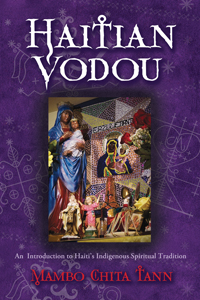“Zo li mache, li mache, li mache…” (The bones, they walk, they walk, they walk…) — From the Djo prayer sung during the opening of most Haitian Vodou ceremonies
One of the great loves of my life is history, and if you didn’t know that before you began this chapter, you’d certainly be convinced by the time you’re done. Many people, especially those who are interested in spirituality or magic, will probably take one look at this lengthy chapter, roll their eyes, and start thumbing ahead to the chapters about Vodou magic and the Lwa.
This would be a mistake. I strongly believe that if you really want to understand what Haitian Vodou is, you need to spend a little time learning about where it comes from, and how it developed into what it is today. Zanset-yo (pronounced zon-SET YO), the ancestors, are central to understanding Haitian Vodou. Both the indigenous Taino and the transplanted African people who made Haiti the world’s first black republic honored their ancestors in very special ways, both inside and outside of religious ceremonies. The history of Haiti, in addition to introducing you to the culture and worldview that created the practices of Haitian Vodou, also created some of our Lwa. Historical figures including the revolutionary generals L’Ouverture and Dessalines; maroon (guerilla rebel) leaders including Makandal; Mayanet and Boukman, the Vodou priests who led the Bwa Kayiman cereremonies; and even the infamous Haitian President-for-Life Francois “Papa Doc” Duvalier are, or were at some time, equated with or actually granted status as Lwa.
Just as a Haitian Vodou ceremony begins with a ritual recitation of the history of one’s lineage, and concludes with a song that begins by talking about how the “bones (ancestors) are walking,” this book begins with a recitation of history. Light a white candle and listen, as I sing of the land of mountains where the bones still walk.
Excerpted from HAITIAN VODOU: AN INTRODUCTION TO HAITI’S INDIGENOUS SPIRITUAL TRADITION by Mambo Chita Tann. Copyright (c) 2011-12, all rights reserved.
